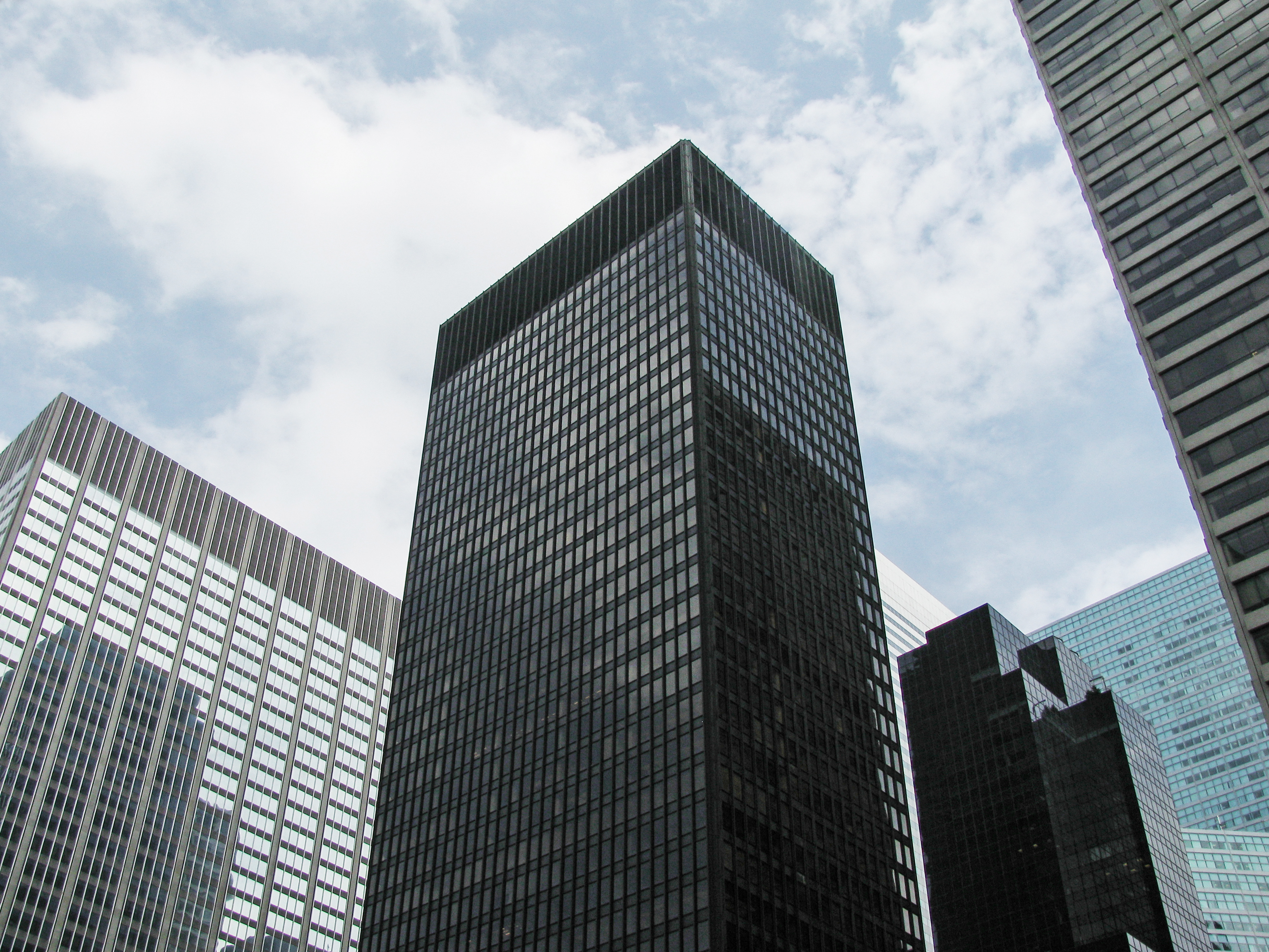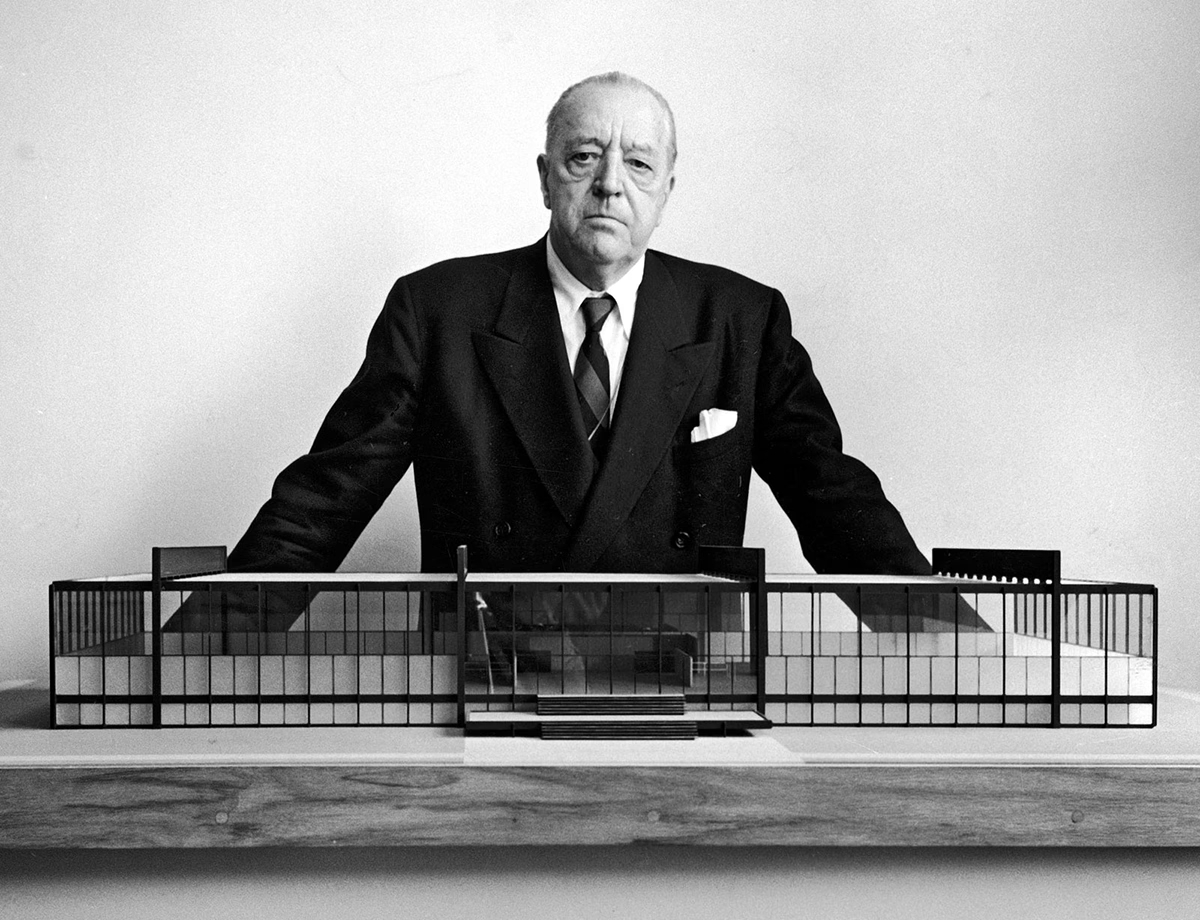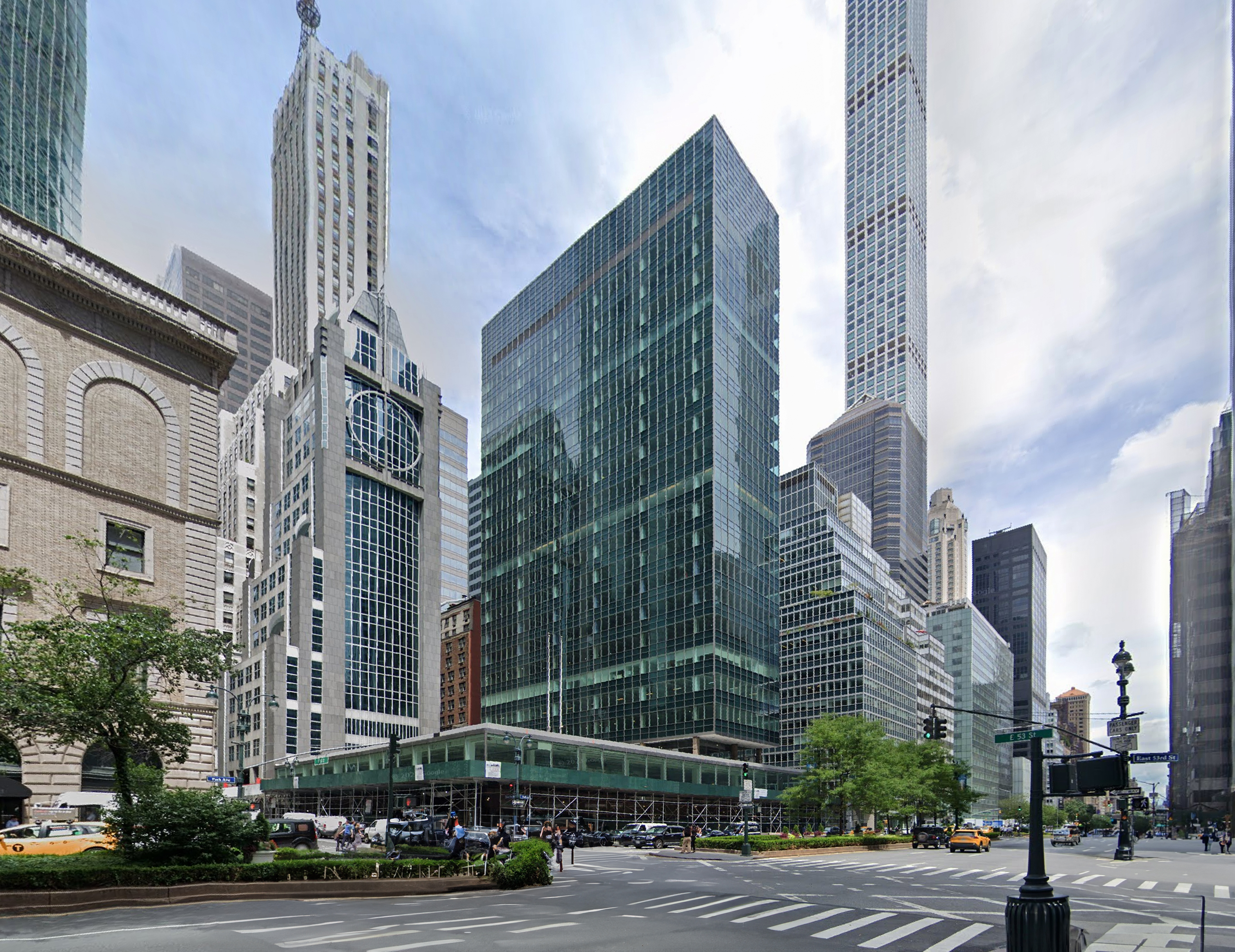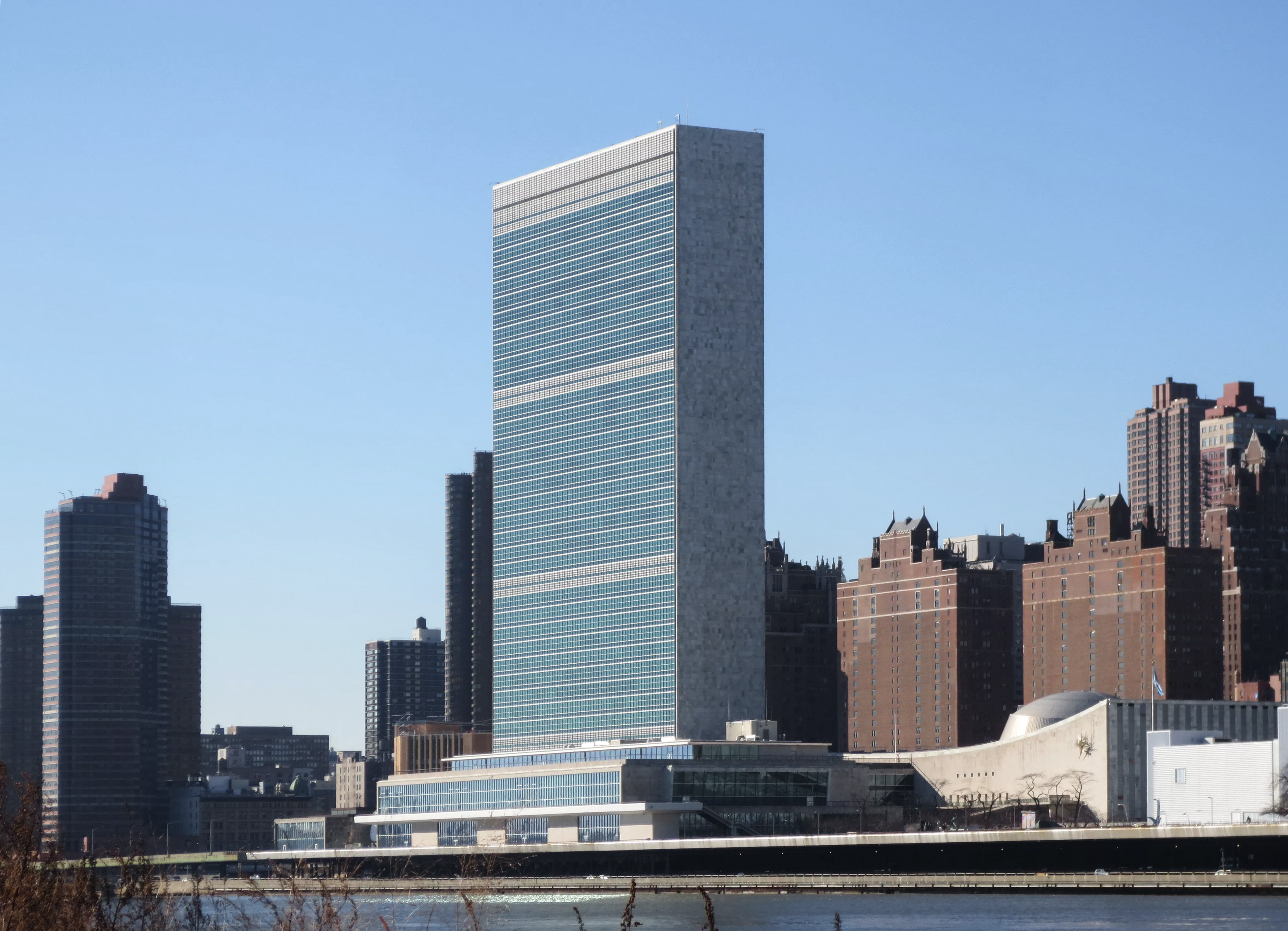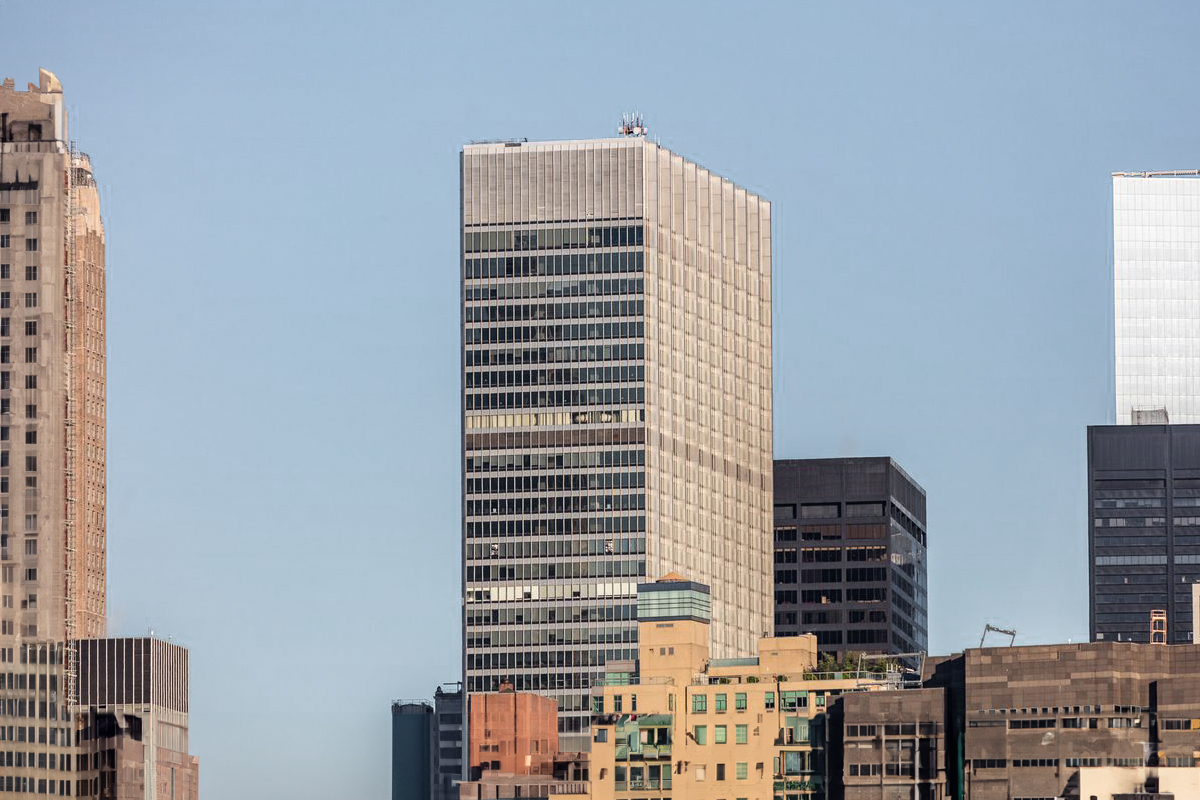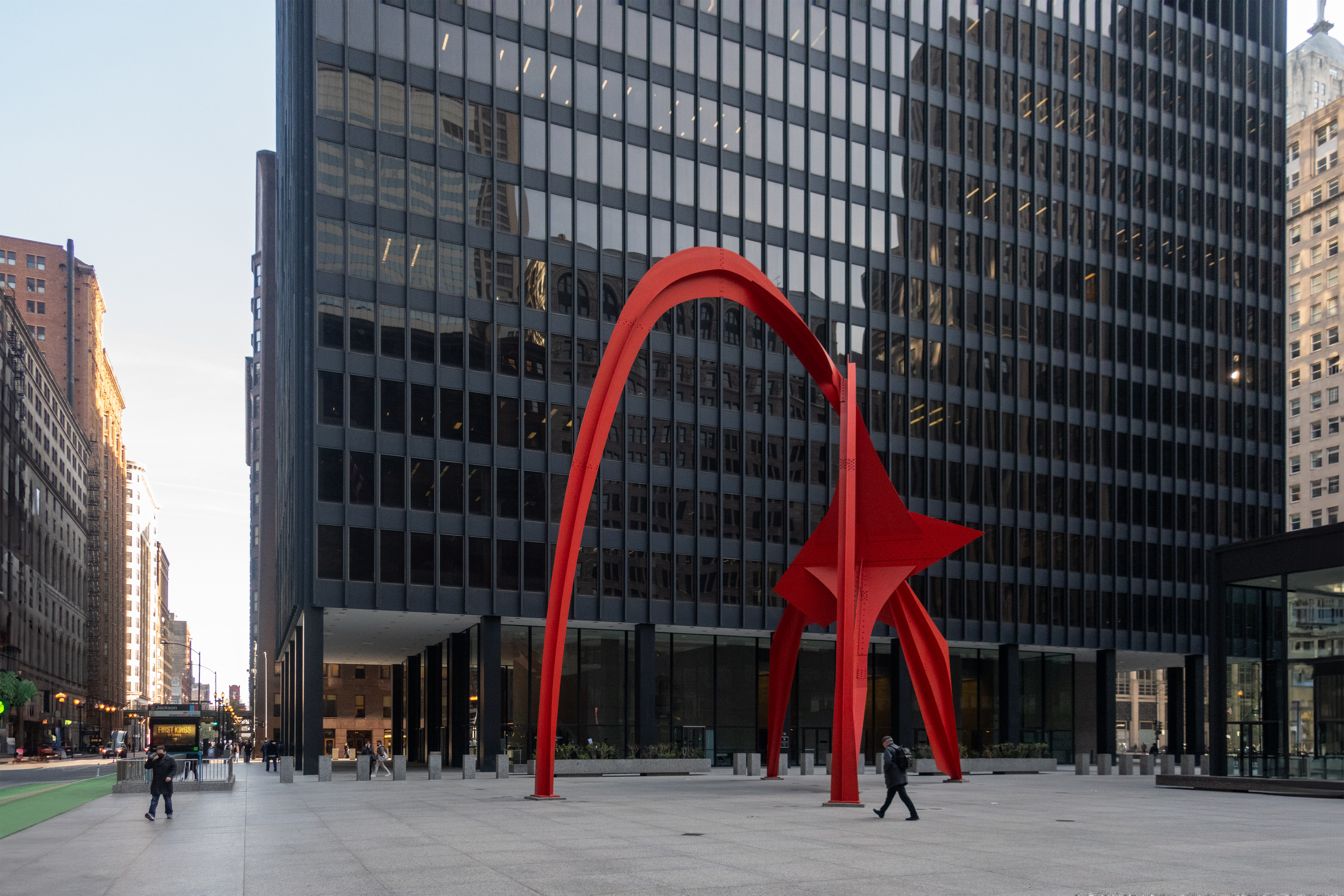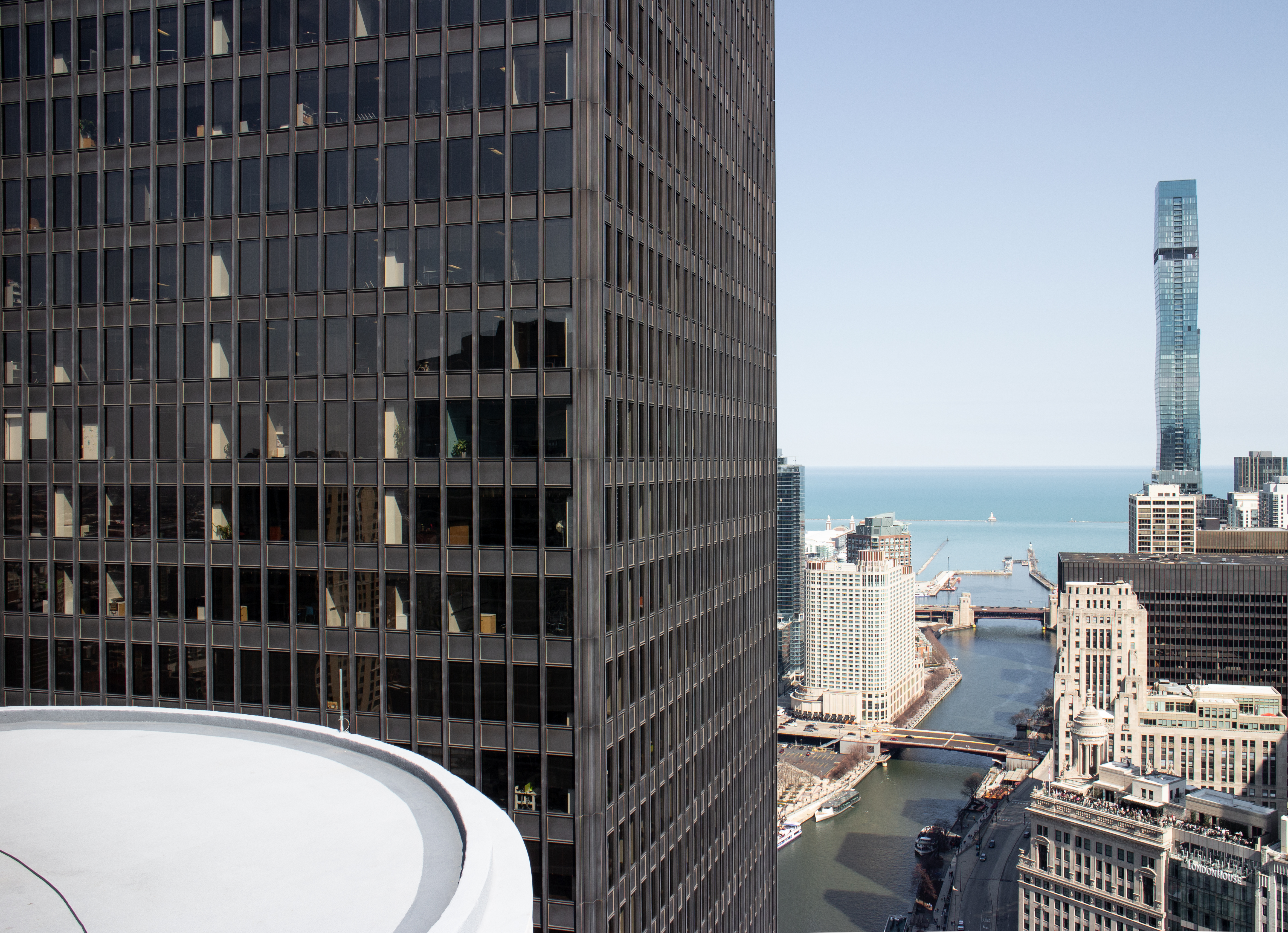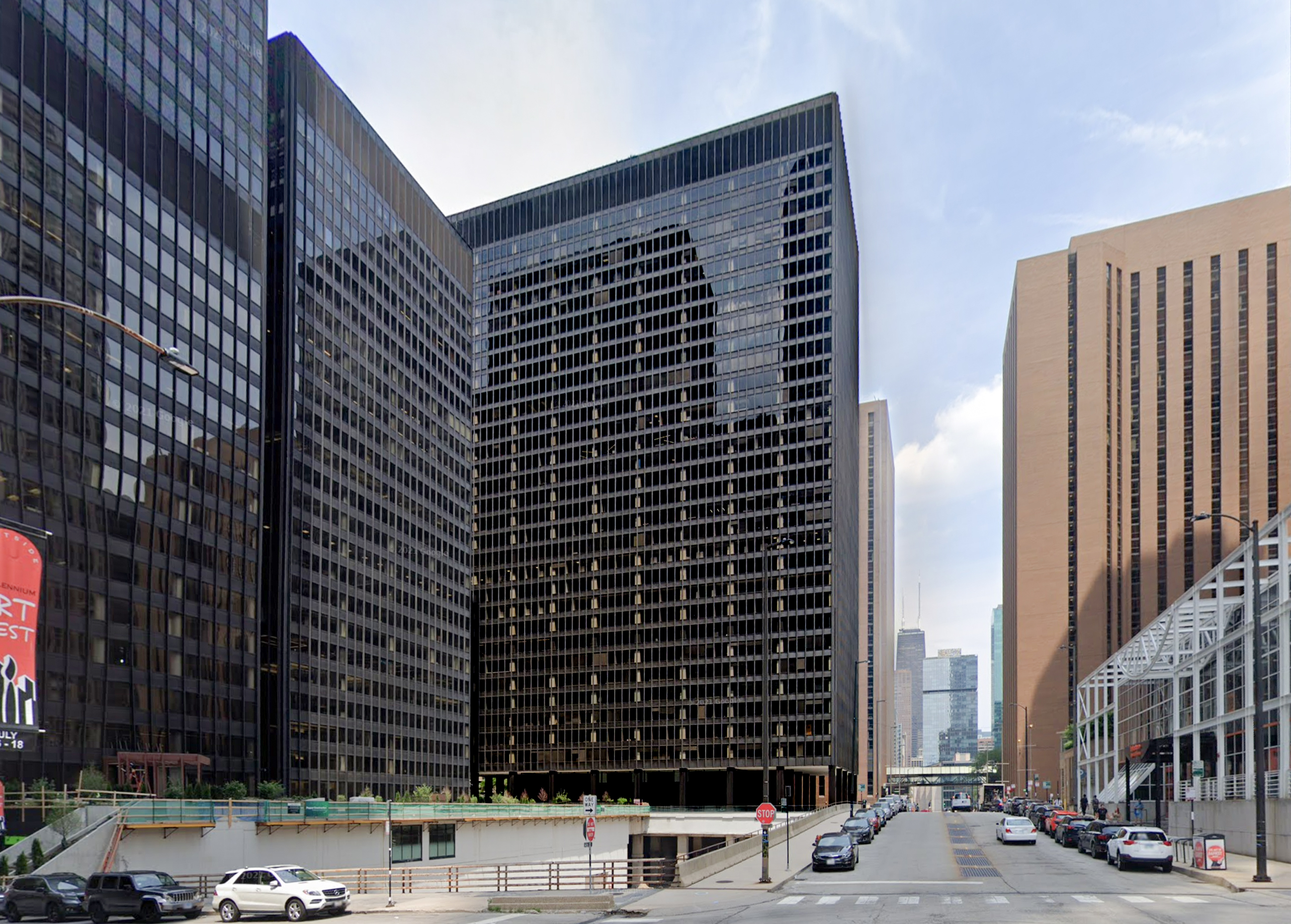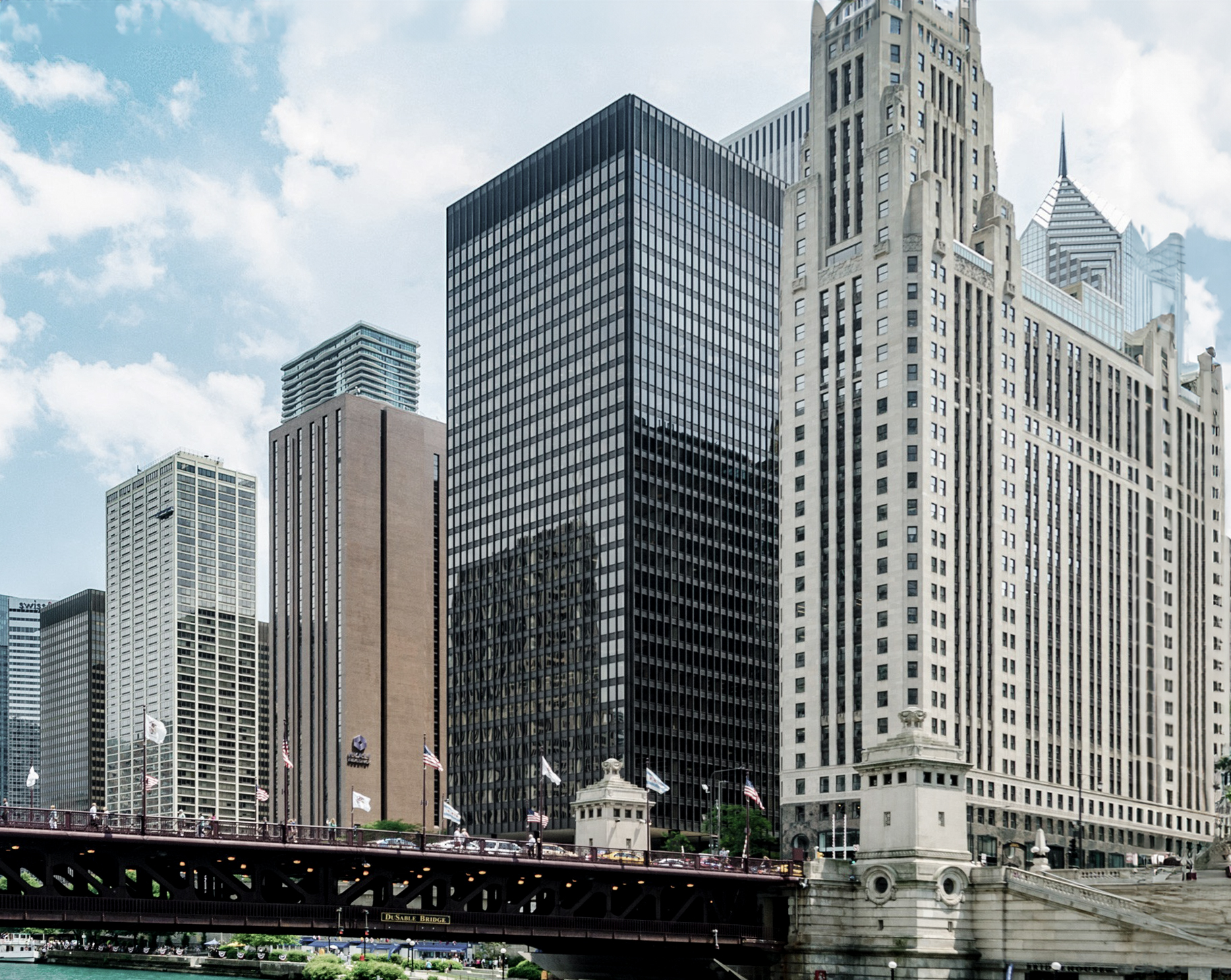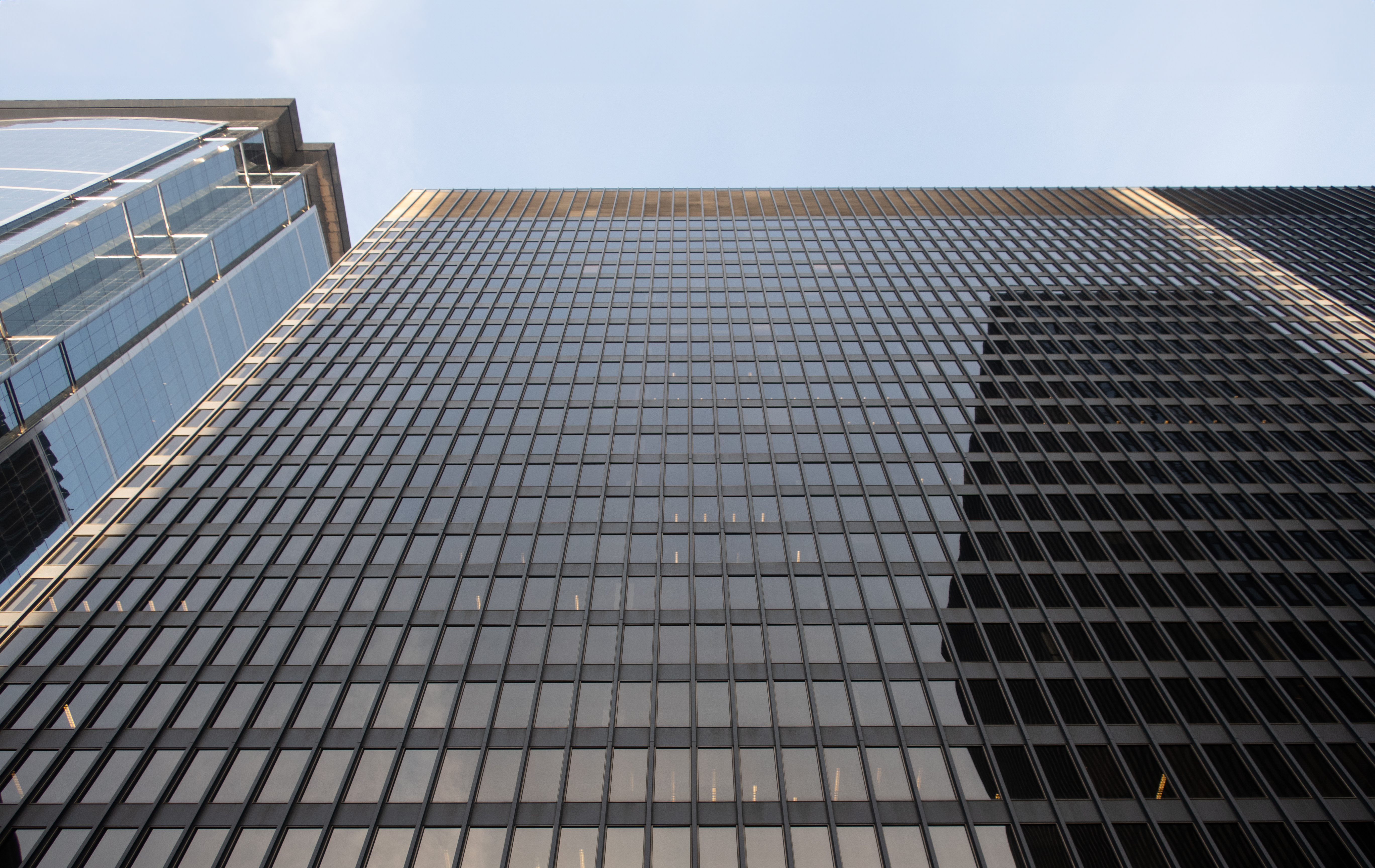The Seagram Building is an International Style skyscraper designed between 1954 and 1955 by Mies van der Rohe, and built between 1955 and 1958, for a reported $37.8 million dollars, in New York, NY.
Its precise street address is 375 Park Ave, New York, NY. You can also find it on the map here.
The Seagram Building is a structure of significant importance both for the city of New York and the United States as a nation. The building embodies the distinctive characteristic features of the time in which it was built and the International Style style. Because of that, the Seagram Building was officially included in the National Register of Historic Places on February 24th 2006, and was also included in the New York Register of Historic Places on October 3rd 1989.
Mies decides to take a step back from 4th avenue and created a plaza in front of the building. At that time it was not common for a private project to create public space, but Mies thought the "breathing" space was necessary in order to appreciate the architecture.
The Seagram Building soon became the typological example for office towers. For Mies himself, the Seagram Building was the perfect materialization of Universal Space for the working environment.
The building underwent a major restoration in 2016.
